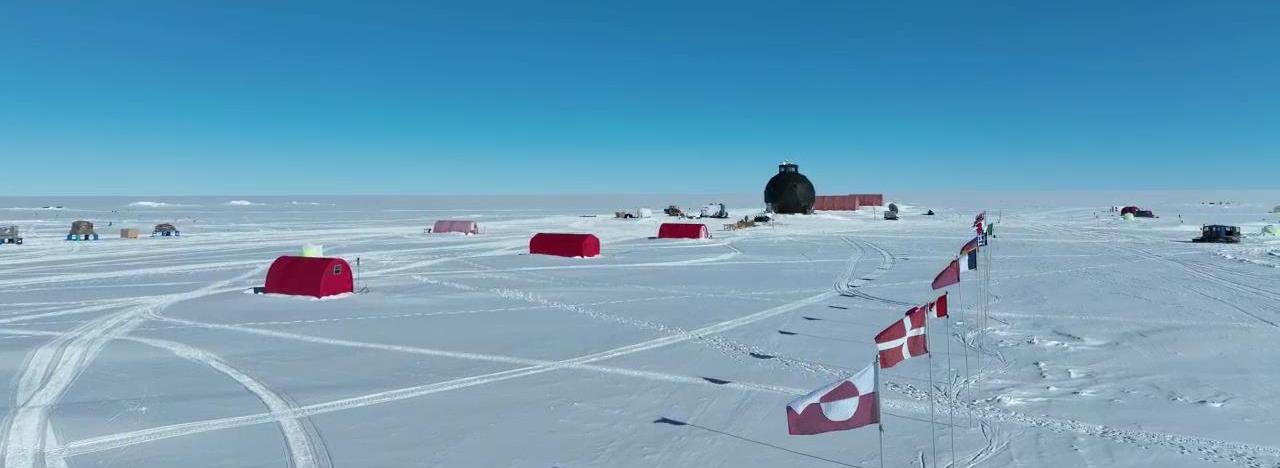
EGRIP flag line and camp on a sunny day seen from Dorthes drone (todays weather was not suited).
July 7, 2022

EGRIP flag line and camp on a sunny day seen from Dorthes drone (todays weather was not suited).
Today, the new cable was winded on the winch, and the next step is to attach the drill to the cable. With the drill getting ready to retrieve ice cores it is time to get the science trench ready for receiving them.
Compared to previous years, the ice core processing will be kept at a low level this year, but the processing will include the following steps: 1) Logging of the ice cores that includes length measurement and division into 1.65 m long sections. 2) Dielectric properties measurement (DEP) of the full core. 3) Two cuts along the core splitting it into three pieces for physical properties, line scan and main core (archive), respectively. 4) Electrical conductivity measurement (ECM) on main core detecting volcanoes among others. 5) Line scan measurement documenting the visual stratigraphy of the core. 6) Cutting core into 55 cm long sections and packing in boxes. If time and manpower allow, we may also do measurements of the physical properties of the ice, such as mapping of the ice crystal structure. This in turn, may give insights into why the ice core breaks are harder at EGRIP. Additional analyses of water isotopes, gas content, impurity content etc, will be carried out after the field season.
What we did today:
Weather today: Mostly overcast and snowing in the evening. Temp. -19°C to -4°C. Wind: 4-12 kt from W and later NW.
FL, Anders Svensson